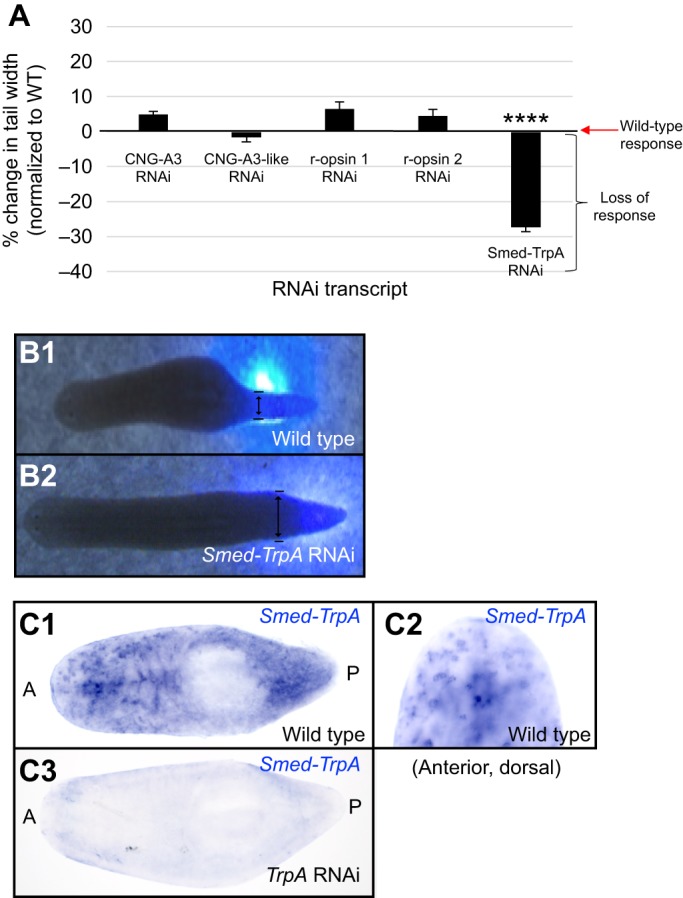Fig. 5.

Smed-TrpA is required for extraocular behavioral responses to near-UV light. (A) Graph of extraocular behavioral responses to near-UV light following RNA interference (RNAi). Genes known to regulate extraocular photoreception in other animals (homologs to the genes encoding CNG channels, opsins and TRPA1) were knocked down following double-stranded RNA (dsRNA) feeding then tested for tail-thinning response. Graph is normalized to wild-type response. Tail thinning was significantly decreased only in Smed-TrpA(RNAi) animals (N≥21). Statistics: one-way ANOVA with Tukey's multiple comparisons test; ****P<0.0001 (as compared with wild-type responses); error bars=s.e.m. (B) Images showing wild-type thinning response (B1) and lack of response in Smed-TrpA(RNAi) animals (B2). Double-headed black arrows designate the width measurement. (C) In situ hybridization for Smed-TrpA. Wild-type worms express Smed-TrpA along the entire length of the planarian body (C1), particularly in dorsal tissues (C2), whereas expression is lost following Smed-TrpA(RNAi) feeding (C3). N≥13. A, anterior; P, posterior.
